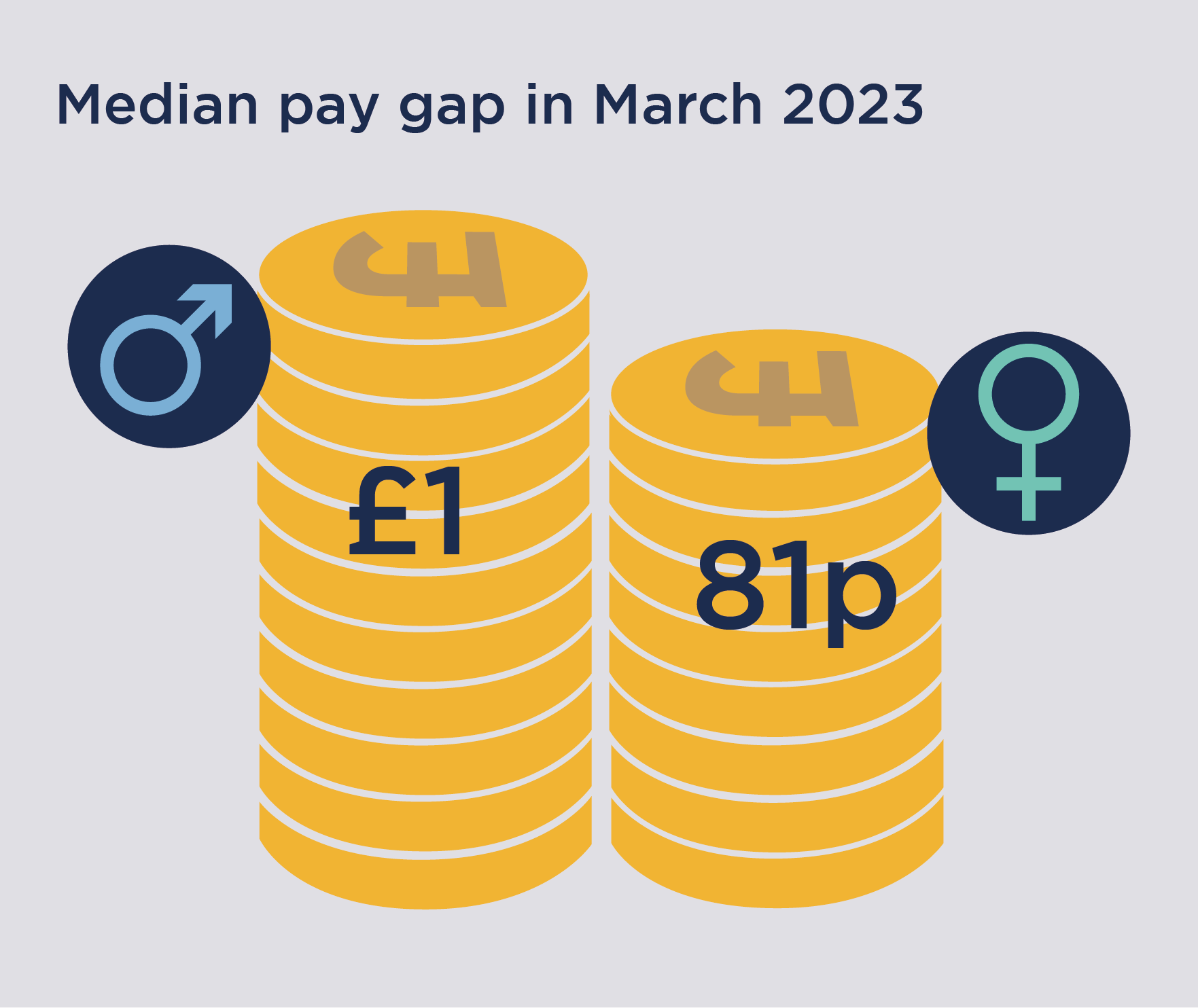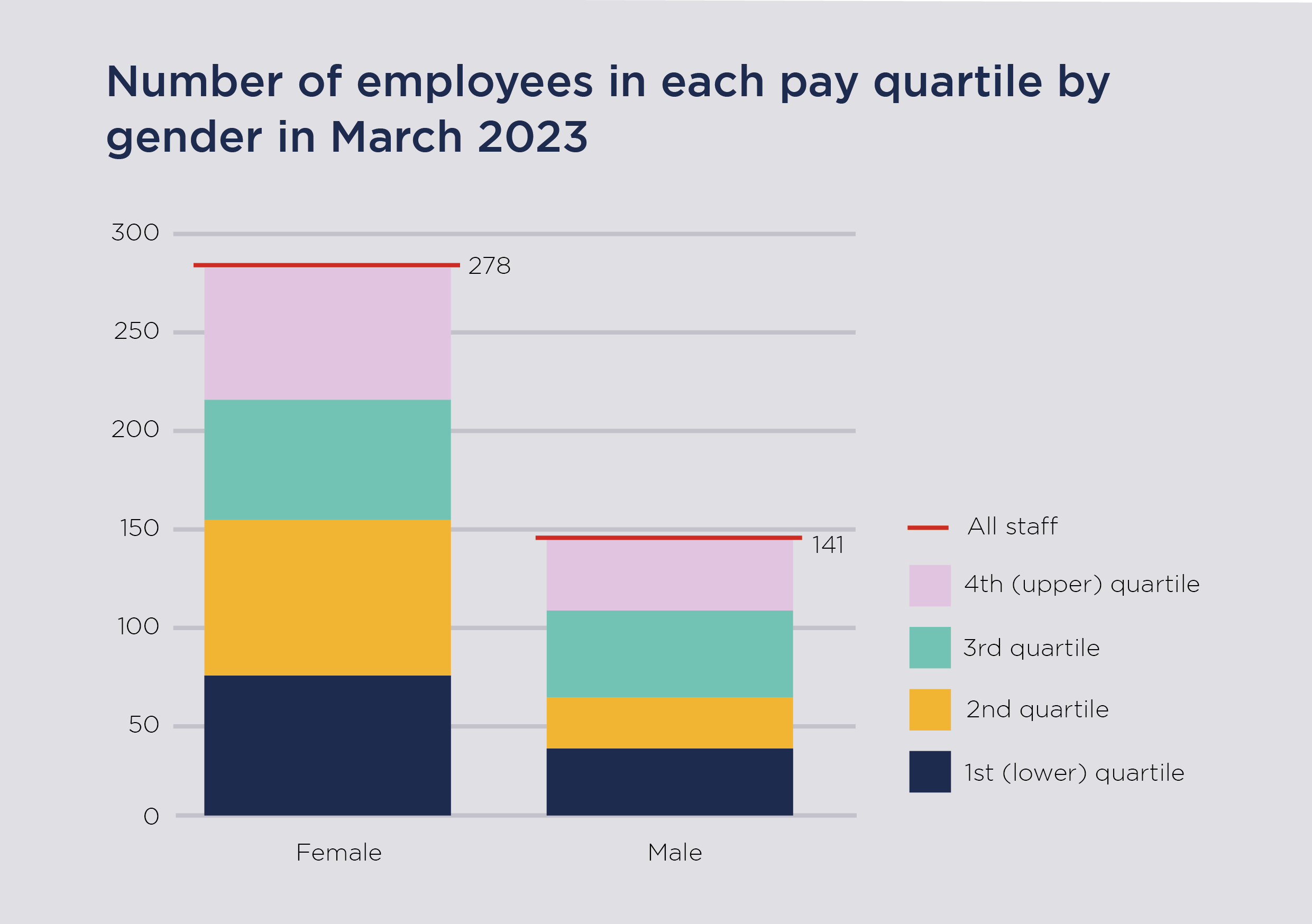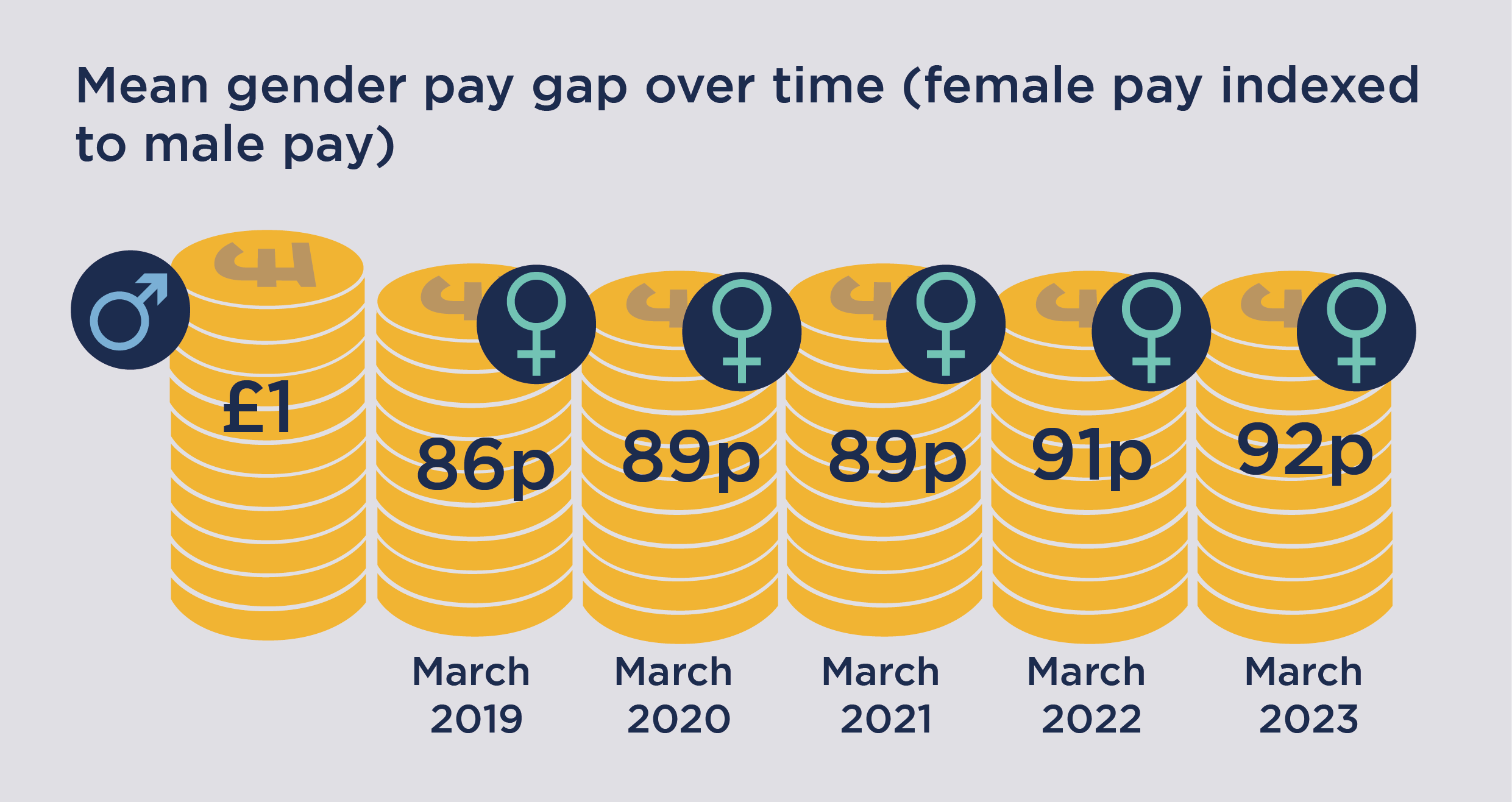Equality and diversity
The gender pay gap at the OfS
Public sector bodies are required to publish gender pay gap data for 31 March each year, by the following 30 March. The OfS has now published its gender pay gap data (31 March 2023), including the previous year’s data (March 2022).
What is the gender pay gap?
The gender pay gap is the difference in the average earnings between all men and women in an organisation. It is different to equal pay, which is about the difference in actual earnings of men and women doing equal work (or work of equal value).
Since April 2017, employers with 250 or more employees have been required to publish information on their gender pay gap including:
- the mean gender pay gap
- the median gender pay gap
- the mean bonus gender pay gap
- the median bonus gender pay gap
- the proportion of men and women who received bonuses
- the proportion of men and women according to quartile pay bands.
The mean gender pay gap is the difference between the mean hourly rate of pay of male full-pay relevant employees and that of female full-pay relevant employees.
The median gender pay gap is the difference between the median hourly rate of pay of male full-pay relevant employees and that of female full-pay relevant employees.
OfS workforce
The OfS had a workforce of 419 on 31 March 2023. Due to the size of our organisation, small changes in our staffing can have a large impact on the gender pay gap reporting statistics.
Our gender pay gaps – key points
1. Our median gender pay gap in March 2023 was 18.8 per cent. This figure has reduced from last year’s figure of 20.9 per cent.
Across the whole organisation the female mid-point salary falls 18.8 per cent below the male mid-point salary. The main reason for this is a higher proportion of men (57 per cent) are employed in the top two quartiles of the organisation compared with the proportion of women (46 per cent).

2. Despite the higher proportion of men in the top two quartiles, the number of men and women in the highest quartile has moved steadily closer over time.
In March 2023, women were distributed fairly evenly through the four pay quartiles:
- 46 per cent were in the top two pay quartiles (of which 24 per cent were in the top quartile of salaries compared with 26 per cent of men)
- 54 per cent were in the bottom two pay quartiles.
Of the men employed in the organisation:
- 57 per cent were in the top two quartiles (of which 26 per cent were in the top quartile)
- 43 per cent were in the bottom two quartiles.
In terms of absolute numbers, the top quartile had:
- in March 2022
- 56 women
- 41 men
- in March 2023
- 67 women
- 37 men.
From March 2019, the total number of female staff in the highest earning quartile has increased by 24. The number of men in the top quartile has decreased by one.

3. Our mean gender pay gap has been reducing since the OfS was incorporated.
In March 2019, the mean rate was 13.6 per cent; this has reduced to 8.3 per cent in March 2023.

4. The OfS employs twice as many women than men. This gender split has remained constant since March 2019.
As we have a predominately female workforce, small movements in male employees in and out of the organisation can create a high level of volatility in our gender pay percentages.
Actions and way forward
Over the last five years the OfS has considered the impact of the pay award on the gender pay gap with a view to moving the median pay rate for women closer to the male median.
We have released a new people strategy from 2024–2028, and we continue to consider our approach to pay and reward over this period.
Get the data
|
|
|
March 2022 | March 2023 |
|---|---|---|---|
|
Gender pay gap – overall |
Mean |
8.8% |
8.3% |
|
Median |
20.9% |
18.8% |
|
|
Gender pay gap – bonus pay in the 12 months to 31 March 2021, to 31 March 2022 and six months to 30 September 2022 |
Mean |
8.8% |
8.1% |
|
Median |
0.0% |
0.0% |
|
|
Proportion of employees paid a bonus in the 12 months to 31 March 2021, to 31 March 2022, and six months to 30 September 2022 |
Male employees |
81.8% |
71.8% |
|
Female employees |
87.0% |
75.8% |
| Quartile | Female | Male | Female | Male |
|---|---|---|---|---|
|
|
March 2022 | March 2022 | March 2023 | March 2023 |
|
First quartile (lowest salaries) |
70.8% |
29.2% |
67.6% |
32.4% |
|
Second quartile |
67.7% |
32.3% |
75.2% |
24.8% |
|
Third quartile |
62.5% |
37.5% |
58.1% |
41.9% |
|
Fourth quartile (highest salaries) |
57.8% |
42.3% |
64.4% |
35.6% |
23 January 2024 - Updated with latest narrative, figures and charts using 2023 data.
24 March 2023 - Figures, charts and information updated with March 2022 data, and the most recent figures for September 2022.
15 March 2022 - Figures and information updated with September 2021 data, and graphics added to represent the data visually.
28 January 2022 - Figures and information updated with 2021 data.
18 March 2021 - March 2020 data added
30 March 2020 - March 2019 data published
Describe your experience of using this website
